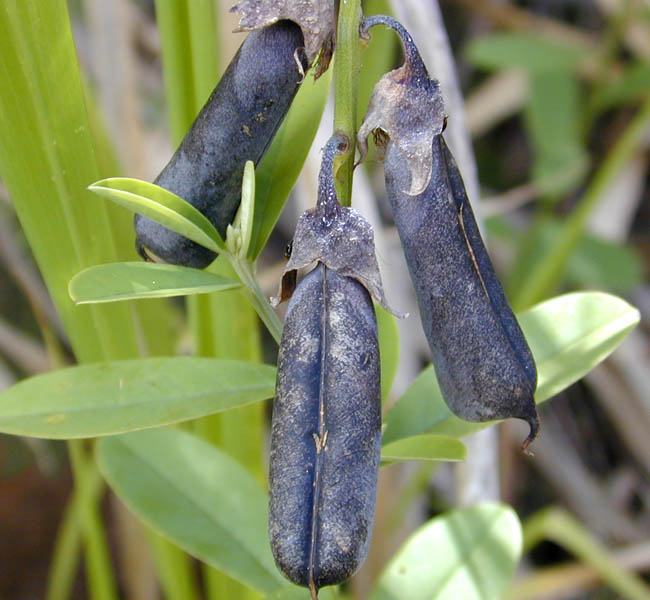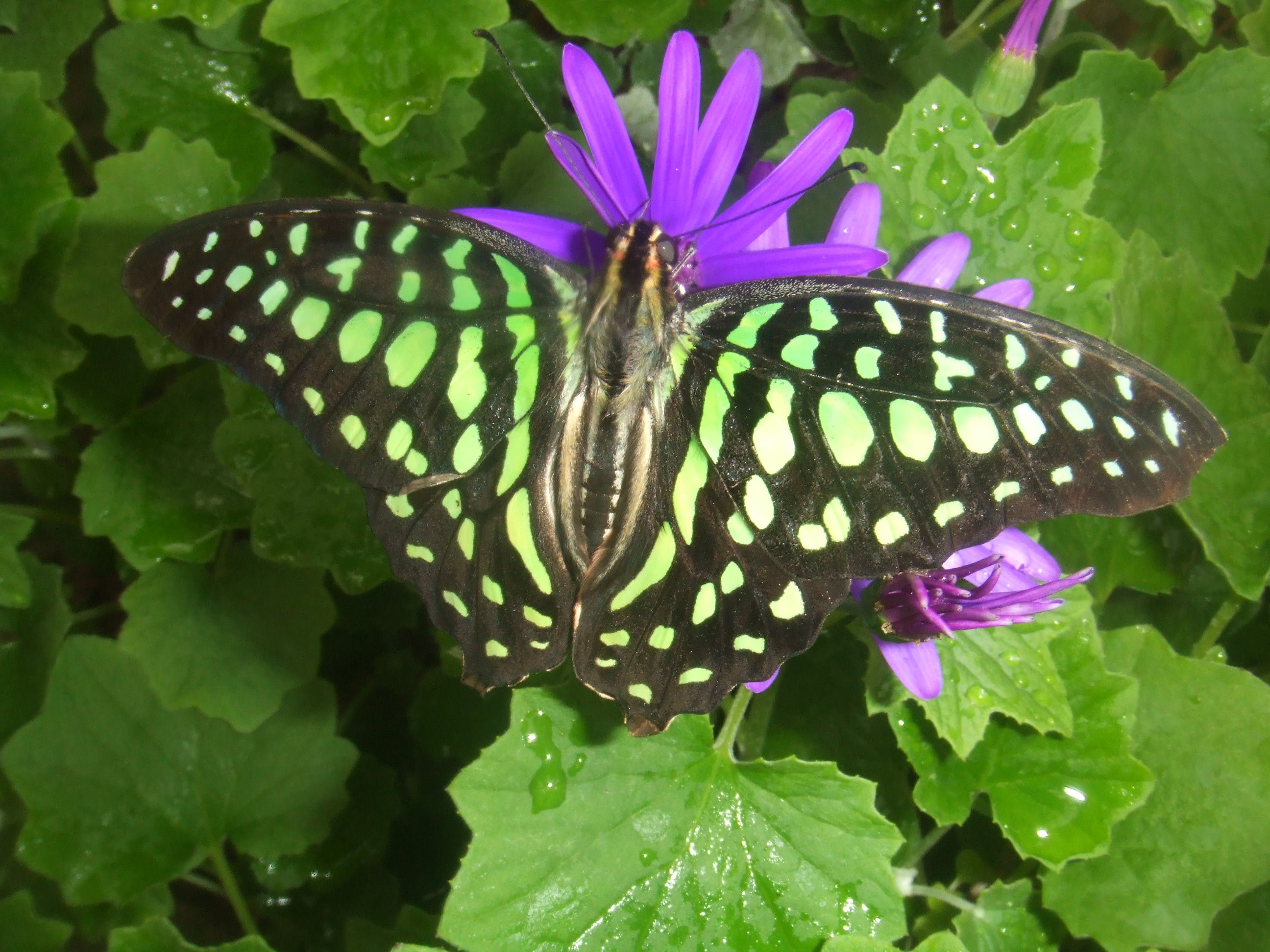|
Utetheisa
__NOTOC__ ''Utetheisa'' is a genus of Arctiinae (moth), tiger moths in the family Erebidae. The genus was first described by Jacob Hübner in 1819. Description Palpi porrect (extending forward), extending beyond the frons. Antennae ciliated. Forewings long and narrow, where the outer margin is short and somewhat erect. Vein 3 from before angle of cell. Veins 4 and 5 from angle, vein 6 from upper angle and vein 7 to 10 from a short areole. Hindwing with vein 5 from above angle of cell. Vein 6 and 7 from upper angle and vein 8 from middle of cell. Caterpillars of many ''Utetheisa'' species feed on ''Crotalaria'' (rattlebox), and hence the genus as a whole is often called rattlebox moths. The adults usually have bright aposematism, aposematic coloration and contain toxic pyrrolizidine alkaloids, which are used as a chemical defense and are also incorporated into the sex pheromones of the males. Taxonomy The members of its subgenus, subgenera ''Pitasila'', ''Atasca'', and ''Raanya'' ... [...More Info...] [...Related Items...] OR: [Wikipedia] [Google] [Baidu] |
Phalaena Ornatrix
''Utetheisa ornatrix'', also called the ornate bella moth, ornate moth, bella moth or rattlebox moth, is a moth of the subfamily Arctiinae. It is aposematically colored ranging from pink, red, orange and yellow to white coloration with black markings arranged in varying patterns on its wings. It has a wingspan of 33–46 mm. Moths reside in temperate midwestern and eastern North America as well as throughout Mexico and other parts of Central America. Unlike most moths, the bella moth is diurnal. Formerly, the bella moth or beautiful utetheisa of temperate eastern North America was separated as ''Utetheisa bella''. Now it is united with the bella moth in ''Utetheisa ornatrix''. The larvae usually feed on ''Crotalaria'' species, which contain poisonous alkaloid compounds that render them unpalatable to most predators. Larvae may prey on other bella moth larvae in order to compensate for any alkaloid deficiency. The bella moth also demonstrates complex mating strategies and is ... [...More Info...] [...Related Items...] OR: [Wikipedia] [Google] [Baidu] |
Utetheisa Elata
''Utetheisa elata'' is a moth in the family Erebidae. It was described by Johan Christian Fabricius in 1798. It is found in Angola, South Africa and Tanzania, as well as on the Comoros, Réunion, Madagascar, Mauritius and the Seychelles. The larvae have been recorded feeding on ''Tournefortia argentea ''Heliotropium arboreum'' is a species of flowering plant in the borage family, Boraginaceae. It is native to tropical Asia including southern China, Madagascar, northern Australia, and most of the atolls and high islands of Micronesia and Polyn ...'', '' Heliotropium amplexicaule'', '' Trichodesma zeylanicum'', '' Heliotropium indicum'', '' Tournefortia sarmentosa'', '' Crotalaria juncea'' and '' Crotalaria striata''. Subspecies *''Utetheisa elata elata'' *''Utetheisa elata fatua'' (Heyn, 1906) *''Utetheisa elata fatela'' Jordan, 1939 References * Moths described in 1798 elata {{Callimorphina-stub ... [...More Info...] [...Related Items...] OR: [Wikipedia] [Google] [Baidu] |
Utetheisa Cruentata
''Utetheisa cruentata'' is a moth of the family Erebidae first described by Arthur Gardiner Butler in 1881. It is found on Mauritius in the Indian Ocean. The larvae feed on ''Tournefortia argentea ''Heliotropium arboreum'' is a species of flowering plant in the borage family, Boraginaceae. It is native to tropical Asia including southern China, Madagascar, northern Australia, and most of the atolls and high islands of Micronesia and Polyn ...''.Goodger & Watson. (1995). ''The Afrotropical Tiger-Moths'': 27 References *Butler, A. G. (1881). ''Illustrations of Typical Specimens of Lepidoptera Heterocera in the Collection of the British Museum''. 5:i–xii, 1–74; pls. 78–100. External links * cruentata Moths of Mauritius Endemic fauna of Mauritius Moths described in 1881 {{Callimorphina-stub ... [...More Info...] [...Related Items...] OR: [Wikipedia] [Google] [Baidu] |
Utetheisa Connerorum
''Utetheisa connerorum'' is a moth of the family Erebidae. It is endemic to the Galapagos archipelago, where it is the most widespread of all ''Utetheisa'' species. It has been found on Baltra, Fernandina, Floreana, Genovesa, Isabela, Marchena, Pinta, San Cristóbal, Santa Cruz, Santa Fé, and Santiago. The food plants contain pyrrolizidine alkaloid Pyrrolizidine alkaloids (PAs), sometimes referred to as necine bases, are a group of naturally occurring alkaloids based on the structure of pyrrolizidine. Their use dates back centuries and is intertwined with the discovery, understanding, and e ...s, which are also stored in the adult moths. References External links * connerorum Moths described in 2009 {{Callimorphina-stub ... [...More Info...] [...Related Items...] OR: [Wikipedia] [Google] [Baidu] |
Utetheisa Sumatrana
''Utetheisa sumatrana'' is a moth of the family Erebidae first described by Walter Rothschild in 1910. It is found on north-eastern Sumatra Sumatra () is one of the Sunda Islands of western Indonesia. It is the largest island that is fully within Indonesian territory, as well as the list of islands by area, sixth-largest island in the world at 482,286.55 km2 (182,812 mi. .... References Moths described in 1910 sumatrana Fauna of Sumatra {{Callimorphina-stub ... [...More Info...] [...Related Items...] OR: [Wikipedia] [Google] [Baidu] |
Utetheisa Galapagensis
''Utetheisa galapagensis'' is a moth of the family Erebidae. It is known only from the Galápagos island of San Cristóbal. It is probably endemic to the archipelago. Larvae have been reared on '' Tournefortia pubescens'', but probably also feed on other ''Tournefortia ''Tournefortia'', often called soldierbushes, is a genus of flowering plants in the borage family, Boraginaceae. It was first published under the name "Pittonia" by Charles Plumier in 1703, in honour of Joseph Pitton de Tournefort, Carl Linnaeu ...'' species. External linksTwo new species of Utetheisa Hübner (Lepidoptera, Noctuidae, Arctiinae) from the Galapagos Islands, Ecuador galapagensis Endemic fauna of the Galápagos Islands Moths of South America Moths described in 1860 {{Callimorphina-stub ... [...More Info...] [...Related Items...] OR: [Wikipedia] [Google] [Baidu] |
Utetheisa Diva
{{Callimorphina-stub ...
''Utetheisa diva'' is a moth in the family Erebidae. It was described by Paul Mabille in 1879. It is found on Réunion, Madagascar and the Seychelles. References Moths described in 1879 diva Diva (, ) is the Latin word for a goddess. Diva is a name from Roman mythology, and is associated with the nouns divus, diva, which means god, goddess, and the adjective divinius, which means divine or heavenly. It has often been used to refer t ... [...More Info...] [...Related Items...] OR: [Wikipedia] [Google] [Baidu] |
Utetheisa Devriesi
''Utetheisa devriesi'' is a moth in the family Erebidae. It was described by Alan H. Hayes in 1975. It is endemic to the Galápagos Islands The Galápagos Islands () are an archipelago of volcanic islands in the Eastern Pacific, located around the equator, west of the mainland of South America. They form the Galápagos Province of the Republic of Ecuador, with a population of sli .... References * Moths described in 1975 devriesi {{Callimorphina-stub ... [...More Info...] [...Related Items...] OR: [Wikipedia] [Google] [Baidu] |
Lepidoptera In The 10th Edition Of Systema Naturae
In the 10th edition of ''Systema Naturae'', Carl Linnaeus classified the arthropods, including insects, arachnids and crustaceans, among his class "Insecta". Butterfly, Butterflies and moths were brought together under the name Lepidoptera. Linnaeus divided the group into three genera – ''Papilio'', ''Sphinx'' and ''Phalaena''. The first two, together with the seven subdivisions of the third, are now used as the basis for nine superfamily names: Papilionoidea, Sphingoidea, Bombycoidea, Noctuoidea, Geometroidea, Tortricoidea, Pyraloidea, Tineoidea and Alucitoidea. Themes When naming the nearly 200 species of butterflies known to him at the time, Linnaeus used names from classical mythology as specific name (zoology), specific names. These were thematically arranged into six groups, and were drawn from classical sources including the ''Fabulae'' of Gaius Julius Hyginus and Pliny the Elder's ''Natural History (Pliny), Naturalis Historia''. The first such group was the ''Equites'', ... [...More Info...] [...Related Items...] OR: [Wikipedia] [Google] [Baidu] |
Utetheisa Antennata
''Utetheisa antennata'' is a moth in the family Erebidae. It was described by Charles Swinhoe Colonel Charles Swinhoe (27 August 1838 in CalcuttaAlthough many published sources give 1836, the India Office Records note it as 1838 (), the other year being that of his brother Robert. – 2 December 1923) was an English naturalist and lepido ... in 1893. It is found on the Nicobar Islands in the Indian Ocean. References * Moths described in 1893 antennata {{Callimorphina-stub ... [...More Info...] [...Related Items...] OR: [Wikipedia] [Google] [Baidu] |
Utetheisa Amhara
''Utetheisa amhara'' is a moth in the family Erebidae. It was described by Karl Jordan in 1939. It is found in Eritrea, Ethiopia, Kenya, Saudi Arabia, Somalia and the United Arab Emirates The United Arab Emirates (UAE), or simply the Emirates, is a country in West Asia, in the Middle East, at the eastern end of the Arabian Peninsula. It is a Federal monarchy, federal elective monarchy made up of Emirates of the United Arab E .... References * Moths described in 1939 amhara {{Callimorphina-stub ... [...More Info...] [...Related Items...] OR: [Wikipedia] [Google] [Baidu] |


